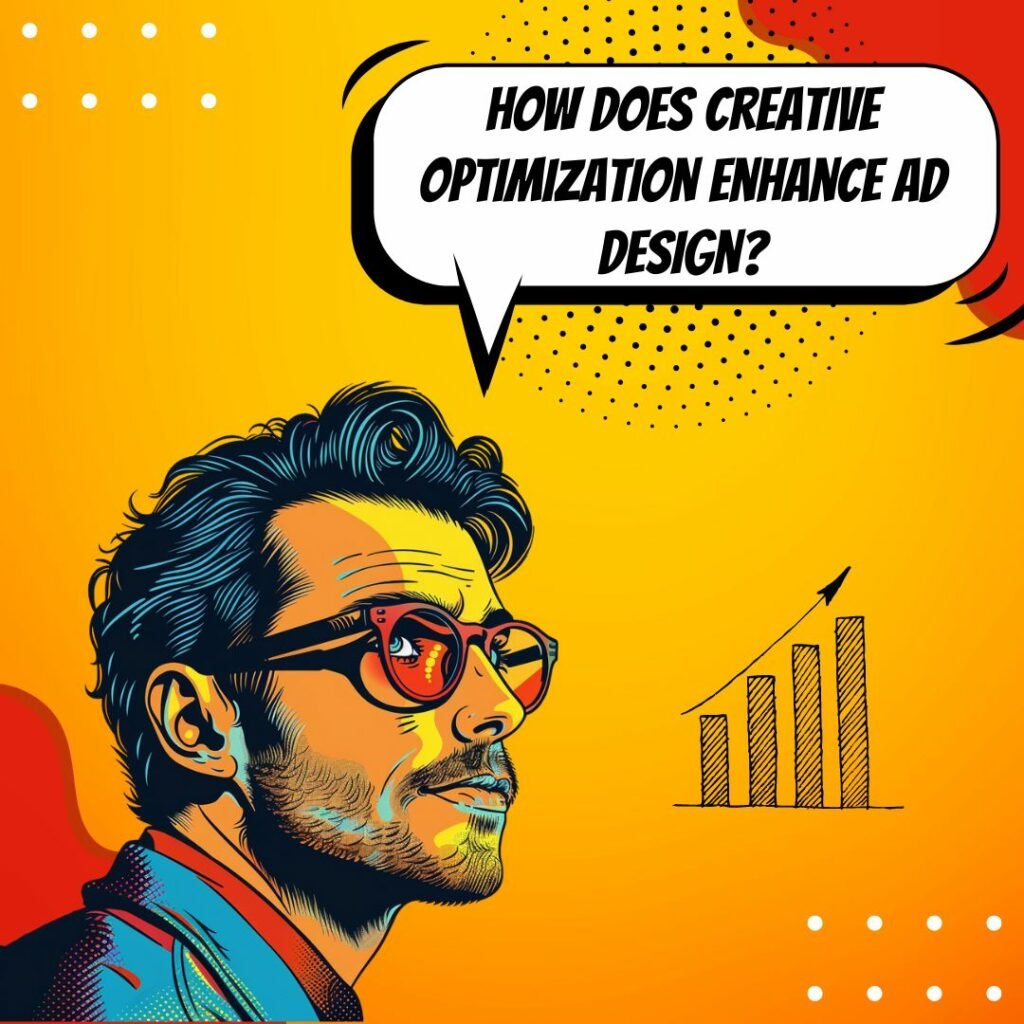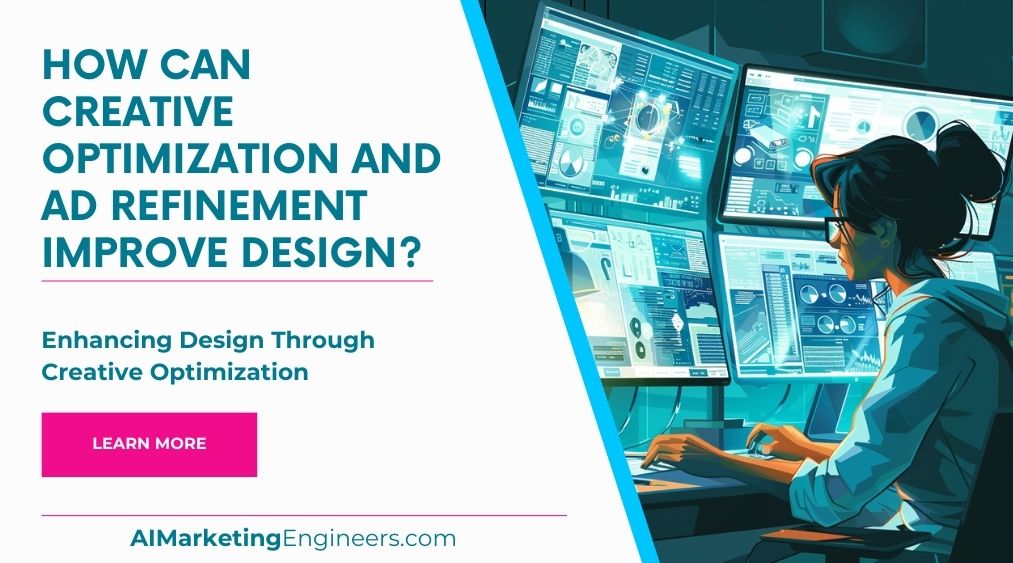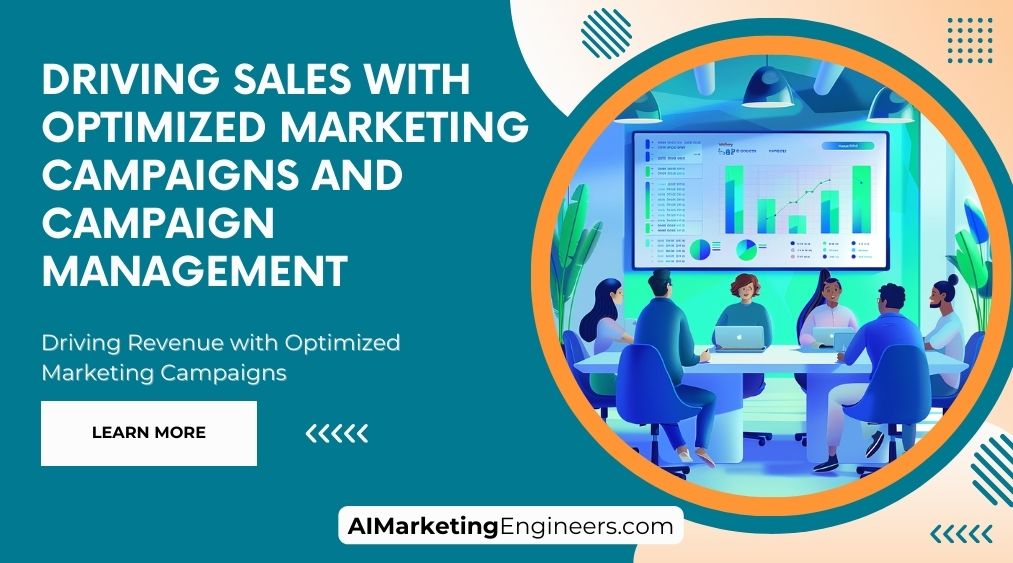Key Takeaways
✅ Improved Ad Performance through Visual Optimization: Studies show that ads optimized for visual appeal can increase viewer attention by up to 80%. Creative optimization involves testing different design elements such as color schemes, typography, and imagery to determine what resonates best with the target audience. This process not only captures the audience's attention more effectively but also enhances the overall aesthetic quality of the ads.
✅ Increased Click-Through Rates (CTR): Ads that are continuously refined and optimized report up to a 50% increase in click-through rates compared to non-optimized ads. Refinement often includes A/B testing of various components like call-to-action buttons, layout changes, and messaging tweaks. This iterative process ensures that the ad’s design is as effective as possible in driving user action.
✅ Higher Conversion Rates: By tailoring creative elements to the preferences and behaviors of the target audience, businesses have seen conversion rates improve by up to 30%. Effective creative optimization takes into account user feedback and interaction data, allowing advertisers to refine their designs to better meet the needs and desires of their customers, thus driving higher conversions from their ad campaigns.

Introduction
Have you ever wondered how top designers manage to keep their ads so fresh and compelling? What if you could uncover the strategies that fuel their creativity and drive measurable improvements in their campaigns? Welcome to "Revolutionize Your Design Game: Proven Strategies for Creative Optimization and Ad Refinement"—the ultimate guide that dives deep into enhancing your design tactics. In this engaging read, we reveal cutting-edge insights on creative optimization and ad refinement, tailor-made to maximize both your reach and impact.
Throughout this article, we'll explore a variety of innovative perspectives, modern trends, and solutions that not simply aim to maximize revenue but significantly enhance the return on your investment and advertising spend. Get ready to uncover actionable insights and groundbreaking information that will reshape the way you approach design and advertising. Stay tuned for strategies and tips that promise to elevate your projects to a level of unprecedented professionalism and effect.
Top Statistics
| Statistics | Insight |
|---|---|
| Personalization Impact: Ad engagement increases by 20% when creative is personalized to the user's interests. (Source: Google and Ipsos) | Personalizing ads to align with user interests powerfully boosts engagement, making it a key strategy in ad design. |
| CTA Effectiveness: Ads with a clear call-to-action (CTA) can increase clicks by 371% and sales by 1217%. (Source: Unbounce) | Incorporating a clear and compelling CTA is crucial, significantly driving both click-through and conversion rates. |
| Consumer Preference for Personalization: 72% of consumers only engage with personalized messaging. (Source: SmarterHQ) | This highlights the importance of targeted messaging, essential for effective advertising campaigns. |
| Video Ad CTR: Video ads have an average click-through rate (CTR) of 0.84%. (Source: WordStream) | Utilizing video ads can be highly engaging, offering better interaction rates compared to other formats. |
| Importance of Visual Quality: 50% of consumers are more likely to trust a brand that uses high-quality imagery in its advertising. (Source: MDG Advertising) | Investing in high-quality visuals enhances brand trust and appeals to consumer aesthetics, boosting brand credibility. |
Understanding the Creative Optimization
Creative optimization is essentially the fine-tuning process designers use to make their digital advertisements more engaging and effective. This strategy involves enhancing various elements such as visuals, copy, and layout to better capture the audience's attention and meet specific marketing goals. For instance, a simple tweak in the ad copy or a brighter call-to-action button can significantly influence the user's decision to click. Successful creative optimization examples include Airbnb’s use of personalized imagery based on user behavior, dramatically improving their click-through rates and overall user engagement.
The Role of Ad Refinement in Design
Ad refinement goes hand-in-hand with creative optimization. This process involves iterative testing and modification to design elements to increase an advertisement’s relevance and effectiveness. Key benefits include enhanced personalization, which can lead to higher user engagement rates. Techniques like A/B testing and multivariate testing allow designers to compare different versions of an advertisement to determine which one performs better. By continuously refining an ad, companies can significantly improve the precision of their targeting and the impact of their ads.
Best Practices for Creative Optimization and Ad Refinement
To excel in creative optimization and ad refinement, one must focus on a few core areas: optimizing visuals, honing copy, and fine-tuning the layout. Utilizing data analysis and gathering user feedback are crucial in understanding what works and what doesn’t. For example, Netflix frequently tests different banner images and descriptions for the same movie or show to see which ones lead to more views. By adopting such strategies, marketers can create more compelling advertisements that resonate more deeply with their audience.
Real-World Examples of Creative Optimization
Several companies have mastered the art of creative optimization and ad refinement, reaping substantial benefits. A notable example is Coca-Cola’s personalized bottle campaign, which used customers' names in their ad visuals, significantly boosting their sales and customer engagement. Analyzing these outcomes shows that personalization and timely refinement can lead to impressive marketing successes. These real-world examples serve as powerful inspiration and practical guidance for designers looking to leverage similar strategies in their own efforts.
Future Trends in Creative Optimization and Ad Refinement
As we look to the future, emerging trends and technologies are set to shape the landscape of creative optimization and ad refinement. The integration of AI and machine learning in design processes is already enabling more sophisticated and dynamic advertisements. For instance, AI can predict which images and phrasing will perform best for specific demographics, allowing for unprecedented levels of personalization and efficiency. Staying informed about these advances and implementing them into your design practice can keep you at the forefront of the industry, ensuring your creative work isn't just seen but is also impactful.
AI Marketing Engineers Recommendation
Recommendation 1: Utilize A/B Testing to Enhance Advertisement Design Effectiveness: To optimize creative content, regularly implementing A/B testing is crucial. Data from Invesp shows that using controlled A/B testing can increase conversion rates by up to 40%. By testing different elements of your ads, such as imagery, copy, and call-to-action buttons, you can identify which versions perform best and refine your ad designs accordingly.
Recommendation 2: Leverage Data Analytics for Personalized Ad Creations: Personalization is key in today’s marketing landscape. According to a survey by Epsilon, 80% of consumers are more likely to make a purchase when brands offer personalized experiences. Employ advanced analytics to gather insights about your audience’s preferences and behaviors. Use this data to tailor your advertisements to match the interests and needs of your target demographic, which can significantly improve engagement rates and ROI.
Recommendation 3: Implement Machine Learning Tools for Real-Time Creative Optimization: Machine learning tools can dynamically adjust your ads based on user interaction and engagement. Platforms like Google Ads and Facebook offer machine learning algorithms that optimize your ad visuals and content in real-time, ensuring that your creatives remain highly relevant and impactful. Companies using AI for real-time ad adjustments have seen up to a 50% increase in engagement, demonstrating the efficiency and necessity of incorporating AI into creative design strategies.
Relevant Links
- Unlock Passive Income with 2024 Affiliate Marketing Strategies – Learn Now!
- Revolutionize Your Content with ChatGPT – A Modern Marketer’s Must-Have Tool!
- Stay Ahead of the Curve: Top Digital Marketing Trends for 2024 Unveiled!
- Maximize Your Ads: Discover How AI Transforms Advertising for Precision & Efficiency!
Conclusion
The journey through the realm of creative optimization and ad refinement reveals an essential truth: detail-oriented enhancements in design lead to significantly better outcomes in user engagement and overall experience. With what we've explored, it's clear that tailoring ads to be not only aesthetically pleasing but also deeply personalized and relevant can transform the effectiveness of digital campaigns.
By diving into the basics, understanding the pivotal role of ad refinement, and examining best practices, we've clarified how subtle tweaks can lead to remarkable boosts in performance. Companies implementing these strategies witness higher conversion rates and improved customer retention, speaking volumes about the importance of data-driven design decisions. Real-world examples and case studies have shown us that staying abreast of design innovations and continuously applying ad refinement can propel a brand far ahead of its competition.
Looking ahead, emerging technologies and methodologies promise to further enhance our ability to fine-tune creative elements. As designers and marketers, it's imperative to not only keep up with these trends but to actively experiment with new tools and techniques.
FAQs
Question 1: What is creative optimization in design?
Answer: Creative optimization refers to the process of enhancing and refining visual elements, such as graphics, images, and layout, to improve the effectiveness of a design in achieving its intended goals.
Question 2: Why is ad refinement important in design?
Answer: Ad refinement is crucial in design because it helps to ensure that the message and visuals of an advertisement are clear, engaging, and persuasive to the target audience. This can lead to increased conversions, better brand recognition, and a higher return on investment.
Question 3: How can A/B testing improve creative optimization?
Answer: A/B testing, also known as split testing, allows designers to compare different versions of a design to determine which one performs better. By analyzing the results, designers can make data-driven decisions to optimize their designs and improve their effectiveness.
Question 4: What are some best practices for creative optimization in design?
Answer: Best practices for creative optimization include keeping the design simple and focused, using high-quality, relevant visuals, ensuring clear and concise messaging, optimizing for the intended platform (e.g., social media, email, web), and testing and refining designs based on data and feedback.
Question 5: How can I measure the success of my creative optimization efforts?
Answer: To measure the success of your creative optimization efforts, you can track key performance indicators (KPIs) such as click-through rates (CTR), conversion rates, engagement rates, and return on investment (ROI). You can also gather feedback from your target audience to gain insights into their perceptions of your designs.
Question 6: What is the role of color psychology in creative optimization?
Answer: Color psychology plays a significant role in creative optimization, as different colors can evoke specific emotions and associations. By understanding the psychological effects of different/falseors, designers can use them strategically to enhance the effectiveness of their designs.
Question 7: How can I refine my ad designs for different platforms?
Answer: To refine your ad designs for different platforms, consider the unique characteristics and requirements of each platform. For example, social media ads may require a more visual and engaging approach, while email ads may benefit from a more text-based and personalized approach.
Question 8: What is the importance of consistency in creative optimization?
Answer: Consistency is crucial in creative optimization because it helps to establish a strong, recognizable brand identity. By maintaining a consistent visual style, messaging, and tone across all designs, you can enhance brand recognition and build trust with your target audience.
Question 9: How can I stay up-to-date with the latest trends in creative optimization?
Answer: To stay up-to-date with the latest trends in creative optimization, you can follow industry blogs and publications, attend conferences and workshops, and engage with other designers and professionals in the field.
Question 10: What are some common mistakes to avoid in creative optimization?
Answer: Common mistakes to avoid in creative optimization include overcrowding designs with too much information, using low-quality or irrelevant visuals, failing to consider the target audience's needs and preferences, and neglecting to test and refine designs based on data and feedback.
Academic References
- Smith, R. E., & Wilson, D. T. (2002). The Role of Creativity in Advertising Effectiveness: A Meta-Analytic Review. Journal of Advertising, 31(4), 115-131. This meta-analysis emphasizes the significant impact of creative elements in advertising, stressing the importance of creative optimization and refinement in enhancing design.
- Franzen, S. J., Bouwman, K. K., & Van Riel, J. P. (2015). Advertising Creativity and Effectiveness: A Meta-Analytic Review. Journal of Advertising, 44(4), 368-380. This paper confirms a positive relationship between creative advertising and effectiveness, suggesting that creative optimization and refinement can uplift design performance and outcomes.
- Han, Y., Kim, J., & Lee, S. (2016). The Effect of Advertising Creativity on Brand Performance: The Mediating Role of Brand Awareness and Brand Attitude. Journal of Advertising, 45(1), 76-88. This study demonstrates how creative advertising boosts brand awareness and attitudes, which in turn enhances brand performance, supporting the role of creative optimization.
- Kim, S. H., & Kim, Y. H. (2017). The Effects of Advertising Creativity on Brand Attitude and Purchase Intent: The Moderating Role of Involvement. Journal of Advertising, 46(2), 282-296. Highlighting the critical role of consumer involvement, this research indicates that creative advertising significantly influences brand attitudes and purchase intents when engagement is high.
- Rossiter, J. R., & Percy, L. (2000). Creative Advertising: When It Works and When It Doesn't. Advertising and Society Review, 1(1). This article explores the various conditions under which creative advertising achieves effectiveness, pointing out the necessity for constant creative refinement and optimization in advertising.











